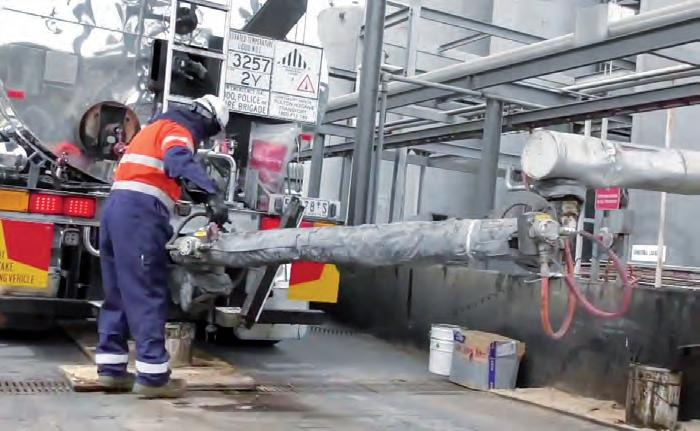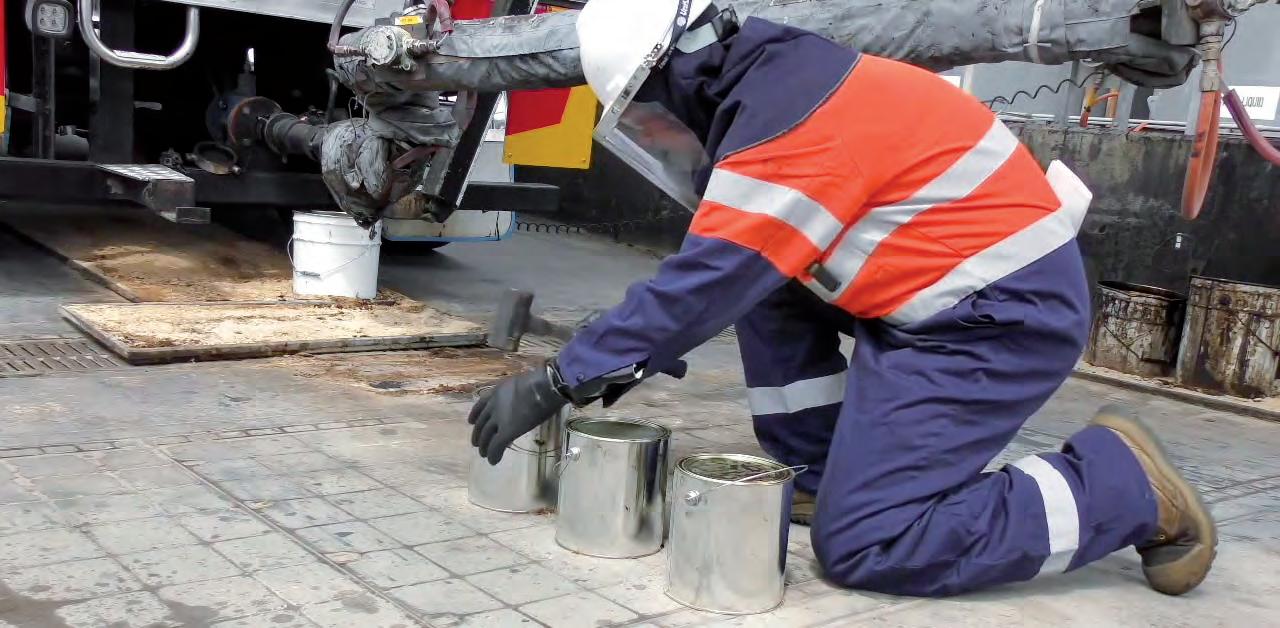
4 minute read
Safe sampling of hot bitumen from road tankers
AUSTRALIAN ASPHALT PAVEMENT ASSOCIATION, IN CONJUNCTION WITH ITS INDUSTRY PARTNERS, IS GIVING THE PAVEMENTS SECTOR AN OVERVIEW OF THE RECOMMENDED SAFETY PROCEDURES THAT NEED TO OCCUR WHEN SAMPLING HOT BITUMEN FROM ROAD TANKERS.
Bitumen and binders in Australia are tested and certified to national specifications at the point of manufacture or supply. In recent years there has been an increasing focus on assessing the properties of bitumen at the point of delivery, for example, at the point of transfer into tanks at asphalt plants or sprayer trucks at road sealing sites.
In order for this to happen, samples need to be taken during the transfer process of bitumen from a road tanker into a static tank or sprayer. The practice of sampling bitumen on site is an activity that involves hazards as it requires personnel to be in close proximity to free-flowing hot bitumen.
It is therefore very important to follow a recommended sampling procedure that minimises any risks to the operator and helps to ensure that a representative uncontaminated bitumen sample can be obtained.
In conjunction with industry personnel, Nigel Preston from Viva Energy, together with Australian Asphalt Pavement Association (AAPA), has put together a video illustrating a recommended procedure for the safe sampling of bitumen from road tankers. The procedure highlights the key steps that should be followed, focusing on safety on

the operative responsible for obtaining the sample. Mr. Preston won both the NSW and national industry roadworker safety award for this initiative.
Sampling bitumen from a road tanker needs to take place during discharge. For any bitumen discharge, the road tanker should be on flat, clean ground with no ignition sources within a 10-metre radius of the tanker. Prior to discharge, all pipework should be securely connected and checked, then discharge commenced under suction. In order to obtain a sample, the discharge must be interrupted so that bitumen is allowed to flow under gravity from the sample valve.
Correct PPE is essential. The operator must wear neck-to-toe protective clothing, safety footwear, safety glasses and face shield, hard hat, balaclava and
The sample containers should be metal paint-style tins with around four litres capacity.

elbow gauntlets in order that they are fully protected in case of any spills.
Once the discharge has been stopped, a large slops bucket should be placed on the ground underneath the sample valve to collect any drips or minor spillages. Around two litres of bitumen should then be drained into the slops bucket to clear any residual bitumen from the previous load and also clear any flushings that may have settled in the sump or the pipework.
The sample containers should be metal paint-style tins of around four litres’ capacity with open top lids. Prior to taking a sample, the slops bucket should be moved to one side and a sample tin placed directly under the valve. The sample point should be less than two feet above flat ground. Under no circumstances should the operator taking the sample hold the tin during filling.
Approximately 750 millilitres to one litre of bitumen should then be allowed to flow into the tin. The sample should then be carefully placed to one side on level ground and allowed to cool with the lid partially covering the opening.
Ideally, duplicate or triplicate samples should be taken in the event that subsequent retesting of bitumen is required.
It is very important that clear, legible labels are attached to the samples providing the following information: the grade of bitumen, the supplier, the date of sampling and the batch or shipment number from which the sample was taken.
The above details will need to be completed by the operator taking the sample. Labels should then be placed on the side of the tins (not on the lid) and the tins placed to one side and allowed to cool.
Adherence to the above procedure should ensure that samples are obtained safely and are representative of the grade of bitumen being supplied. Sampling should not take place in windy conditions or if the tanker is parked on uneven ground.
Overall sampling of as-delivered bitumen is a problematic exercise as it is carried out in a relatively uncontrolled environment, usually with untrained personnel. Handling hot bitumen carries associated hazards and onsite sampling introduced unnecessary risks to the bitumen delivery operation.
While AAPA has provided a recommended safe procedure for sampling bitumen from road tankers, the official position of the association is that this activity should only occur when extenuating circumstances dictate. There are risks involved with road tanker sampling and the best way to manage these risks is for them to be eliminated altogether.
To view the safety video, please visit: www.aapa.asn.au/safe-sampling-ofbitumen











